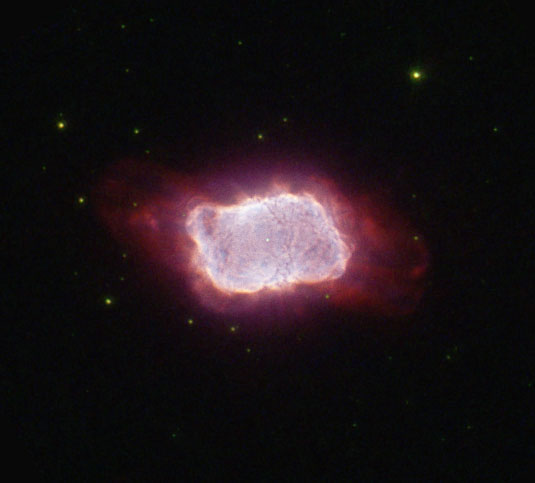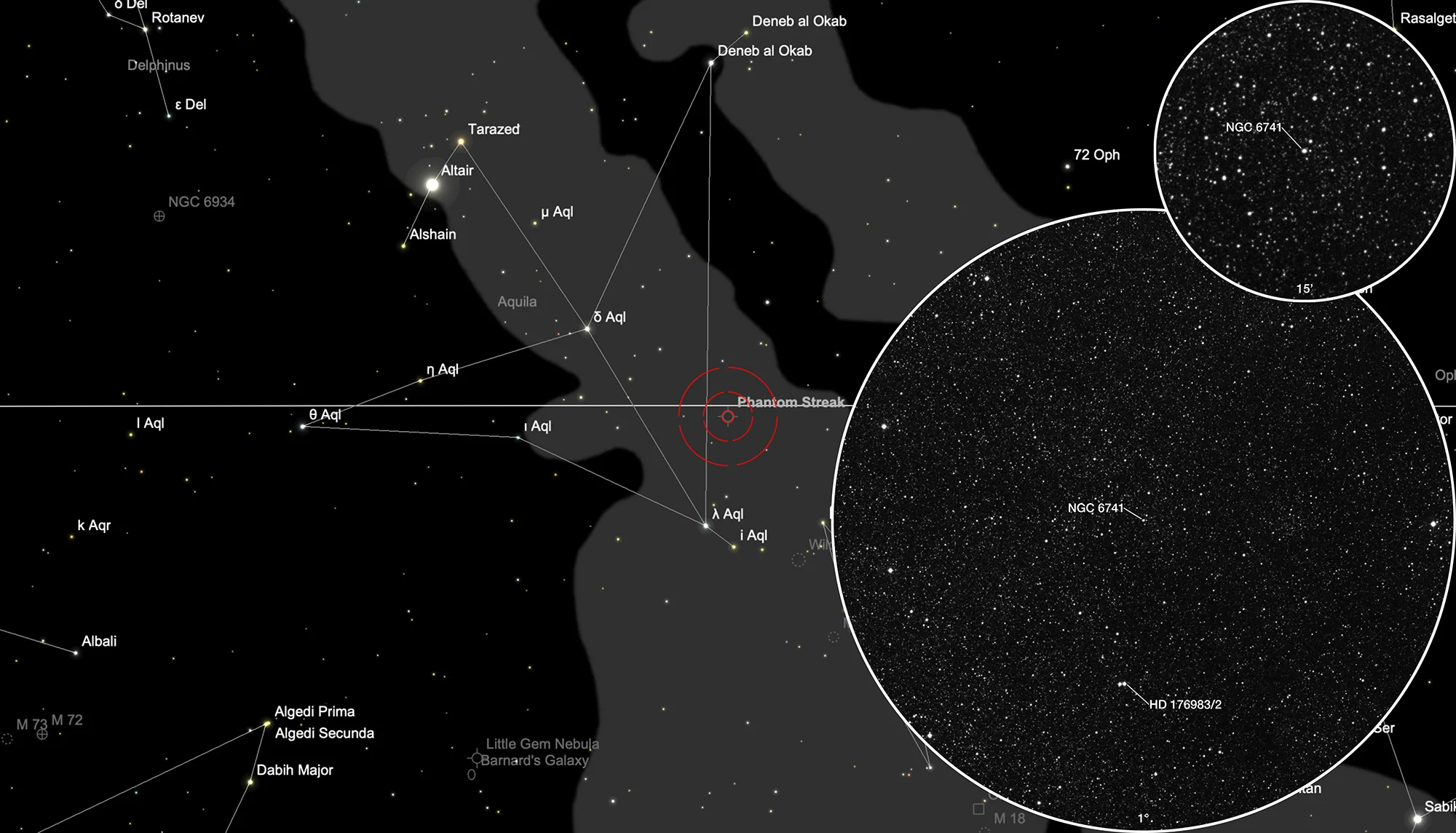Phantom Streak Nebula (NGC 6741)

History
This planetary nebula was found on 19 August 1882 by the American astronomer Edward Pickering using visual spectroscopy at the 15 inch refractor of Harvard College observatory. [277] Dreyer added the nebula as NGC 6741 in his «New General Catalogue» appeared in 1888. [313]
Physical Properties
The age of this planetary nebula is estimated to 1400 years. It is a dense, high-excitation, almost-prolate ellipsoid, surrounded by a sharp low-excitation skin and embedded in a spherical halo containing a large fraction of the nebular mass. The kinematics, physical conditions and ionic structure indicate that NGC 6741 is in a deep recombination phase, started about 200 years ago, and caused by the rapid luminosity drop of the massive, hot and faint post-AGB star, which has exhausted the hydrogen-shell nuclear burning and is moving along the white dwarf cooling sequence. [625]
| Designation | NGC 6741 |
| Type | PN |
| Right Ascension (J2000.0) | 19h 02m 37.0s |
| Declination (J2000.0) | -00° 26' 56" |
| Diameter | 0.13 arcmin |
| Photographic (blue) magnitude | 10.8 mag |
| Visual magnitude | 11.5 mag |
| Metric Distance | 2.147 kpc |
| Dreyer Description | planetary, stellar |
| Identification, Remarks | PK 33-2.1; J 475; CS=14.7 |
Finder Chart
The planetary nebula NGC 6741 can be found in the constellation Aquila. The double star pair HD 176983/2 consists of a bluish and a reddish star and serves as a finding aid for the PN. On 7 July it is in opposition to the Sun and crosses the meridian at local midnight. The best observing time are the months March to December.
Visual Observation
400 mm Aperture: The blue/red double star is beautiful to look at. The position of NGC 6741 can be clearly identified from the surrounding stars. In the 21 mm Ethos eyepiece (85x) the PN appears as a small but bright fuzz. In the 9 mm Nagler (200x) the PN is still a small fuzz. — 400 mm f/4.5 Taurus Dobsonian, Hasliberg, 18. 8. 2023, SQM 21.2, Bernd Nies
